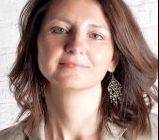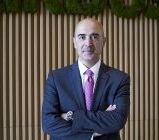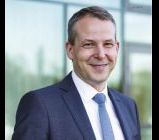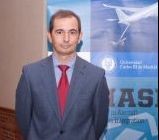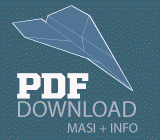MASI
A new course for air traffic controllers at UC3M
April, 21th 2012 16:40
Carlos III University of Madrid (UC3M) is opening the pre-registration period to apply for admittance to the first Initial Course for Tower Controllers, with several authorizations, which is expected to begin in October of 2012 on the Leganés campus.
Having obtained certification from the State Agency for Air Safety (Agencia Estatal de Seguridad Aérea - AESA), the University will launch the first Initial Course for Tower Controllers in October of this year, with authorizations for Visual Aerodrome Control (ADV) and Instrumental Aerodrome Control - ADI) and the associated authorization endorsements called tower (TWR), air control (AIR), ground movement control (GMC) and aerodrome radar (RAD) for aerodrome control.
Students who are interested in this initial training, which will begin in October of 2012 and will last for six months, may pre-register using a form that is available on UC3M’s Air Traffic Controller Training Center’s (Centro de Formación de Controladores Aéreos) web page. Individuals who are pre-registered will receive all of the information that will be made available regarding contents, requirements and deadlines related to the course they are interested in via e-mail and telephone inquiries. In addition, they will receive an e-mail invitation to an information session. The total cost of the course, including all material and teaching support will be approximately 26.500 euros.
The requirements for admission to these training courses are the following: be 18 years old or more, have Spanish nationality or be a national of any European Union country, have the “Bachiller†(completed secondary school) diploma or another type of diploma that permits access to university courses or the equivalent, and a class 3 medical certificate. In order to later obtain the student controller license, in addition to having passed the training course, a certificate of linguistic competence in Spanish and English emitted by one of the AESA authorized evaluating centers, will also be required. In addition, UC3M will administer candidate selection tests which will consist of a psycho technical test (FEAST) and a personal interview in Spanish and English. Those candidates who pass all of the selection tests will receive a qualification of “passâ€, and they may participate in the initial controller training course.
This “initial trainingâ€, which will take place at UC3M, will allow the students to obtain a student controller license, and it includes two parts: a basic theory section which is common for all controllers and an endorsement training portion, according to which type of service the student will be working in (tower, approach or area). During the initial endorsement training, which will be given at the University, the students will be required to practice specific controller skills using equipment that realistically represents the work environment; therefore, the authorized centers must possess simulators that reproduce said work environment. Later, in order to obtain an authorized license and specific endorsement for the specific work post, the student must take a course of “unit training†in one of the work centers (not offered by the University) in the route control towers (approach or area) that are accredited for these courses.
The Air Traffic Controllers Training Center will be located on one of the floors of the new technological building in UC3M’s Science Park, in Leganés (Madrid). It will have two rooms with a 3D Control Tower simulator to realistically reproduce a 180 degree view of an airfield from anywhere in the world, adapted for teaching. The simulator room will also have 2D airfield simulators so that students can work individually and reinforce their tower air control skills. In addition, there will be briefing rooms equipped for theory training; these rooms will be used for meetings held before and after the simulator exercises, as well as for discussing the objectives and results of each simulation exercise.
More information: www.atc.uc3m.es
Students who are interested in this initial training, which will begin in October of 2012 and will last for six months, may pre-register using a form that is available on UC3M’s Air Traffic Controller Training Center’s (Centro de Formación de Controladores Aéreos) web page. Individuals who are pre-registered will receive all of the information that will be made available regarding contents, requirements and deadlines related to the course they are interested in via e-mail and telephone inquiries. In addition, they will receive an e-mail invitation to an information session. The total cost of the course, including all material and teaching support will be approximately 26.500 euros.
The requirements for admission to these training courses are the following: be 18 years old or more, have Spanish nationality or be a national of any European Union country, have the “Bachiller†(completed secondary school) diploma or another type of diploma that permits access to university courses or the equivalent, and a class 3 medical certificate. In order to later obtain the student controller license, in addition to having passed the training course, a certificate of linguistic competence in Spanish and English emitted by one of the AESA authorized evaluating centers, will also be required. In addition, UC3M will administer candidate selection tests which will consist of a psycho technical test (FEAST) and a personal interview in Spanish and English. Those candidates who pass all of the selection tests will receive a qualification of “passâ€, and they may participate in the initial controller training course.
This “initial trainingâ€, which will take place at UC3M, will allow the students to obtain a student controller license, and it includes two parts: a basic theory section which is common for all controllers and an endorsement training portion, according to which type of service the student will be working in (tower, approach or area). During the initial endorsement training, which will be given at the University, the students will be required to practice specific controller skills using equipment that realistically represents the work environment; therefore, the authorized centers must possess simulators that reproduce said work environment. Later, in order to obtain an authorized license and specific endorsement for the specific work post, the student must take a course of “unit training†in one of the work centers (not offered by the University) in the route control towers (approach or area) that are accredited for these courses.
The Air Traffic Controllers Training Center will be located on one of the floors of the new technological building in UC3M’s Science Park, in Leganés (Madrid). It will have two rooms with a 3D Control Tower simulator to realistically reproduce a 180 degree view of an airfield from anywhere in the world, adapted for teaching. The simulator room will also have 2D airfield simulators so that students can work individually and reinforce their tower air control skills. In addition, there will be briefing rooms equipped for theory training; these rooms will be used for meetings held before and after the simulator exercises, as well as for discussing the objectives and results of each simulation exercise.
More information: www.atc.uc3m.es








